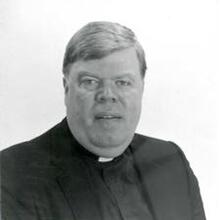Tracking the theologies coming out of Russian émigrés in mid-century Paris
Ably translated by Jerry Ryan, Antoine Arjakovsky’s massive monograph chronicles the evolution of the philosophical and theological theories developed by a group of Russian émigrés in Paris, clustered around the Orthodox journal Puť (The Way), published from 1925 to 1940. Western philosophers have long noted the existence of a Russian “Paris school” featuring the exotic Christian existentialism produced by such creative thinkers as Nikolai Berdayev (1874-1948), Sergius Bulgakov (1871-1944) and Nikolai Lossky (1903-58). The merit of Arjakovsky’s meticulous study is to reveal the variations, conflicts and civil wars that tore apart an exiled spiritual community that only appeared homogeneous from a distance. His examination of the tiny quadrangle of expatriate Paris institutions (the journal, the Academy of Religious Philosophy, the St. Sergius Institute and the Russian Student Christian Movement) documents the drama of a community of literary exiles attempting to create a modern Orthodoxy on alien soil and finally collapsing before the twin horrors of Hitler and Stalin.
Arjakovsky helpfully schematizes the history of The Way into three distinct periods. In the first period (1925-29) the émigrés developed an Orthodox modernism, which attempted to align the Orthodox faith with post-Kantian philosophy and the political currents of the age. During the nonconformist period (1930-35) the authors developed political and theological positions divergent from an earlier Russian tradition. Berdayev’s personalism, promoted in Mounier’s journal Espirt, constitutes the most celebrated of the forays into avant-garde progressivism. In the final period (1935-40) a new spiritual emphasis emerges with a focus on the nature of spirit, both divine and human, and the need to elaborate a resilient Orthodox spirituality in the face of a grim political situation.
Bitter, brilliant controversy wracked each stage of the evolution of The Way and its allied academic institutions. Political utopias clashed. Royalists insisted that the political goal of the émigré movement must be the integral restoration of czarism, with the Orthodox Church re-established as the state religion. Modernists argued that the émigrés should embrace liberal democracy as a providential option, since Russian history—Peter the Great was condemned as particularly villainous—had shown that theocracies inevitably subordinate the church to the state. Social activists defended different versions of Christian socialism, guided by the concept of sobornost (solidarity), while more eschatological thinkers underscored the stark difference between the spiritual and political realms. As World War II engulfed the continent, The Way circle would confront agonizing political choices. Some would collaborate with the Nazis after the German invasion of the Soviet Union, the satanic persecutor of Orthodox Christendom, while others would adhere to a pro-Soviet Christian communism once Stalin had ended the anti-religion persecution and called for unity in the defense of Mother Russia. The most prominent female member of The Way, Mother Maria Skobtsova (1891-1945), would be murdered in the gas chambers of Ravensbrück because of her rescue work on behalf of Jews in occupied Paris.
Similar controversy swirled around the ecclesiological discussions in the journal. Given the Y.M.C.A.’s generous material support of the émigré institutions, some authors developed an amalgam between traditional Orthodox doctrines and trends in liberal Protestant theology. References to Paul Tillich and Karl Barth suddenly appeared. Other authors—and alarmed Orthodox bishops—condemned these novel theologies as a surrender to Masonic deism. For some, Catholicism, especially in its aesthetic French form, was an inviting homologue in exile; for others, notably Georges Florovsky (1883-1979), Catholic overtures to the Orthodox were only a ruse used by Rome in the interest of an eventual “uniate” liquidation of the Orthodox churches. Behind the ecclesiological disputes rose a more fundamental question: the nature of the Kingdom of God. Was it identical with the church? Only the Russian Orthodox Church? With an international Orthodoxy? With all Christians? Was it purely spiritual and interior? Expressible through a political regime? Or, as the eschatological theologians argued, was it present only at the end of time in eternity, thus revealing the radically improvisational nature of any historical church or state?
Especially impressive is Arjakovsky’s analysis of the philosophical dispute over the nature of the spirit that convulsed The Way community in its later years. Bulgakov’s The Comforter (1936) became the lightning rod for the dispute. In it he distinguished between the Holy Spirit, the third person of the Blessed Trinity, and a vaguer Spirit of God. Berdayev’s Spirit and Reality (1937) similarly posed the question of divine spirit more broadly than traditional Russian pneumatology had done. While some welcomed this expansive spirituality, others, especially Lossky, condemned it as a resurgence of gnosticism. Ecclesiastical authorities quickly issued condemnations of the new pneumatology as a dangerous betrayal of the approach to the Holy Spirit normatively presented in the liturgy and patristic texts. Was this omnipresent Spirit the third person of the Trinity, a neo-Platonic world soul, a Heideggerian Urgrund, the creative spark in the artist or just an impersonal force suffusing the cosmos? More than a historical curiosity, the pneumatological controversy among the émigrés is a cautionary tale. It marks neither the first nor the last time a group of mystically inclined Christian intellectuals was tempted to substitute a gauzy pantheism for the advocate sent by the historic Jesus of Nazareth.
Arjakovsky’s study reveals a poorly known Christian exile community in its intellectual complexity. His chronicle depicts the richness of a Slavic theology and philosophy usually presented in the West through a series of pious clichés. It also reveals the dynamics of an immigrant community struggling to maintain its (idealized) traditions and cautiously adapt to its new political-religious environment in a fragile intellectual enclave in Montparnasse. Few communities have negotiated this perilous retrieval and adaptation with such metaphysical glory.








